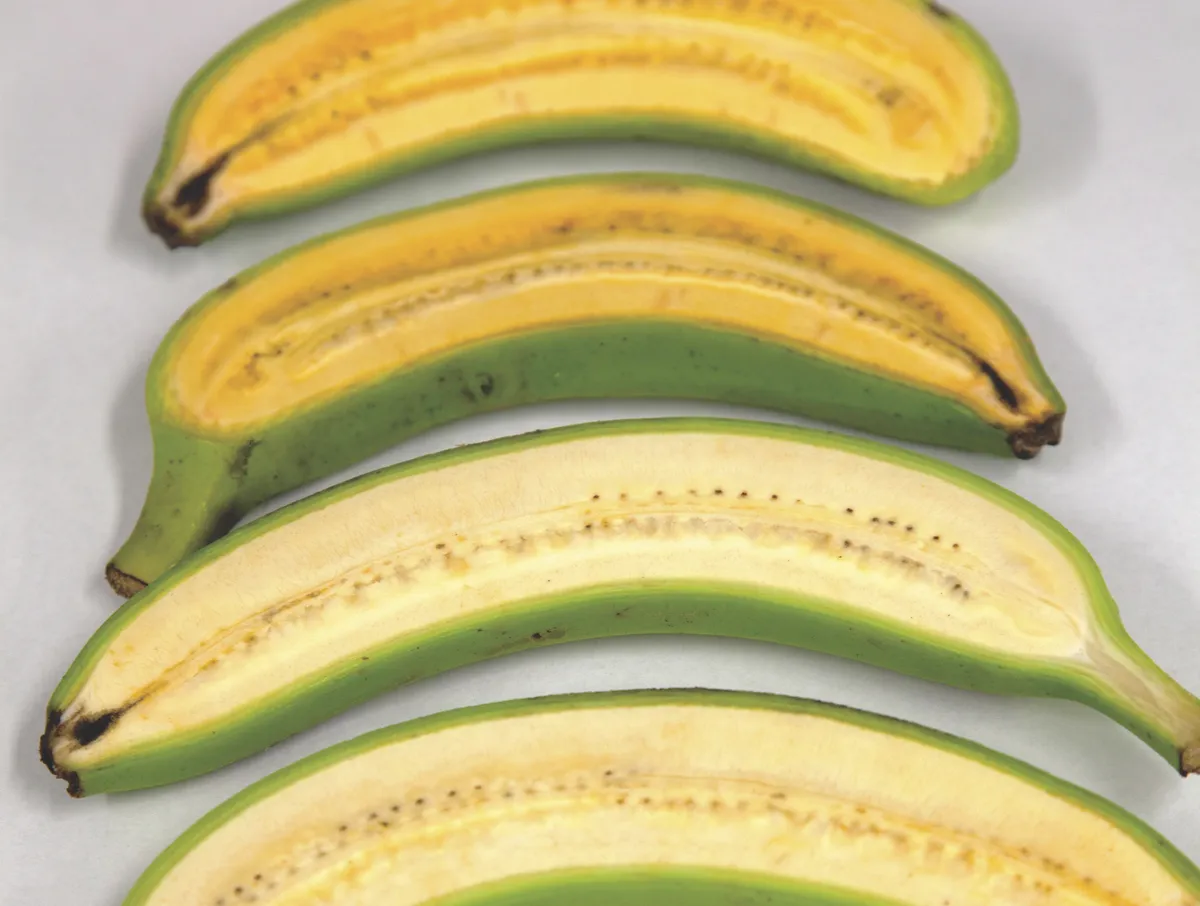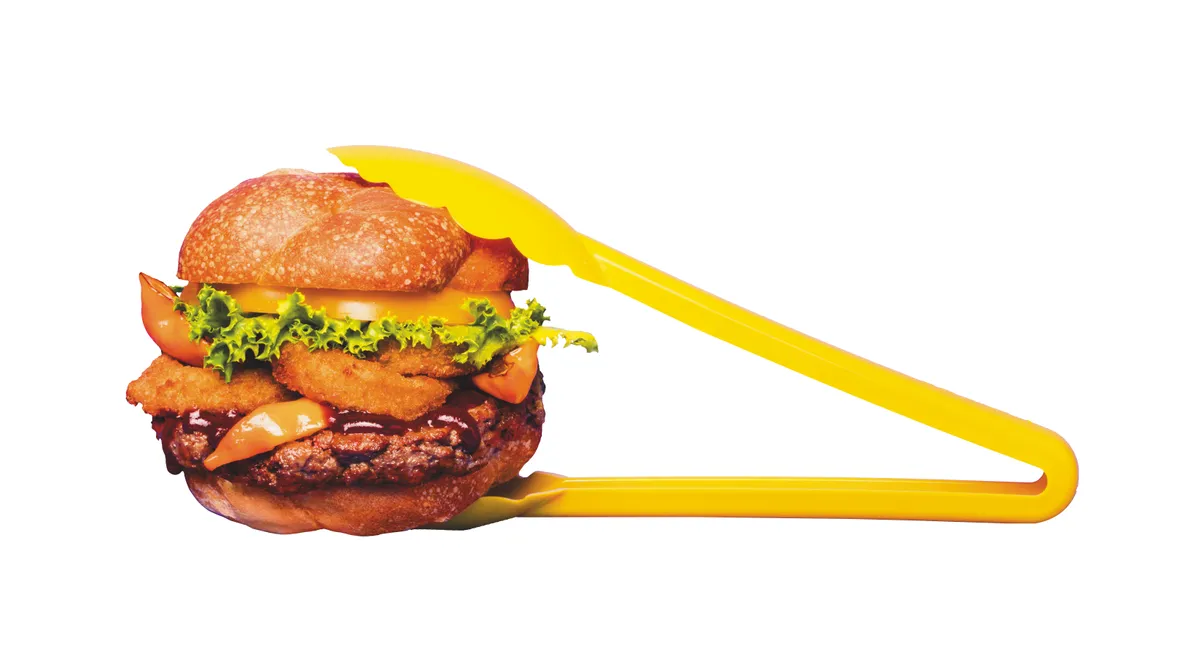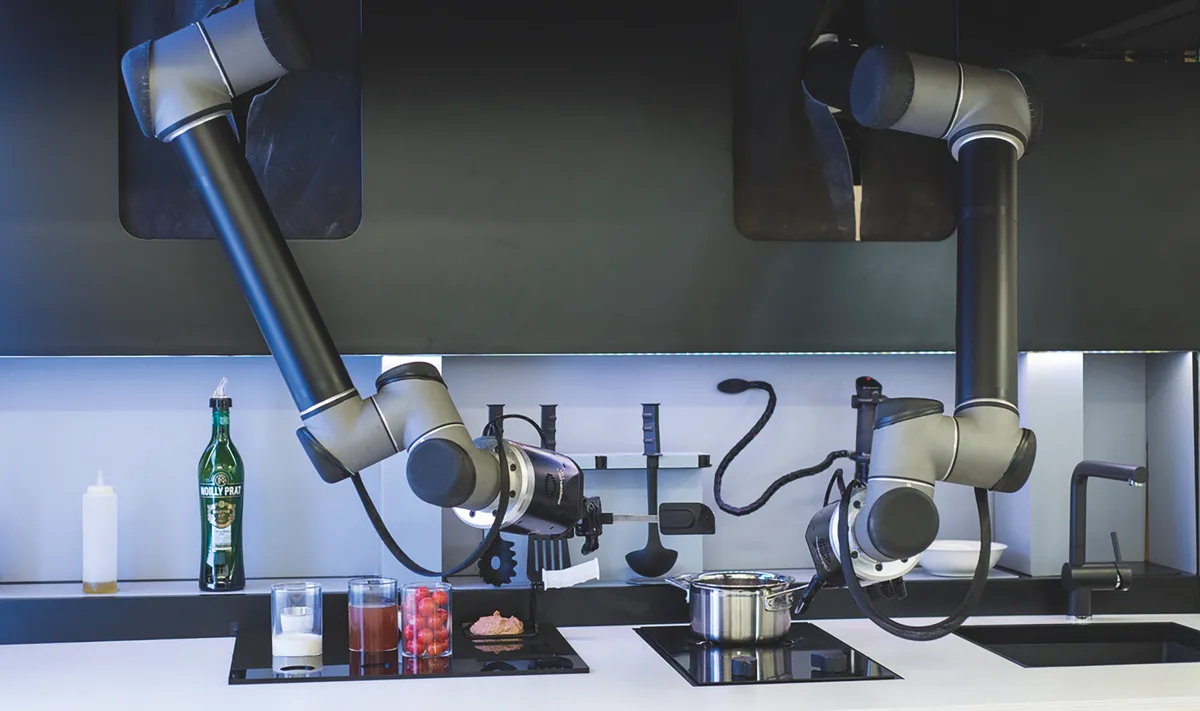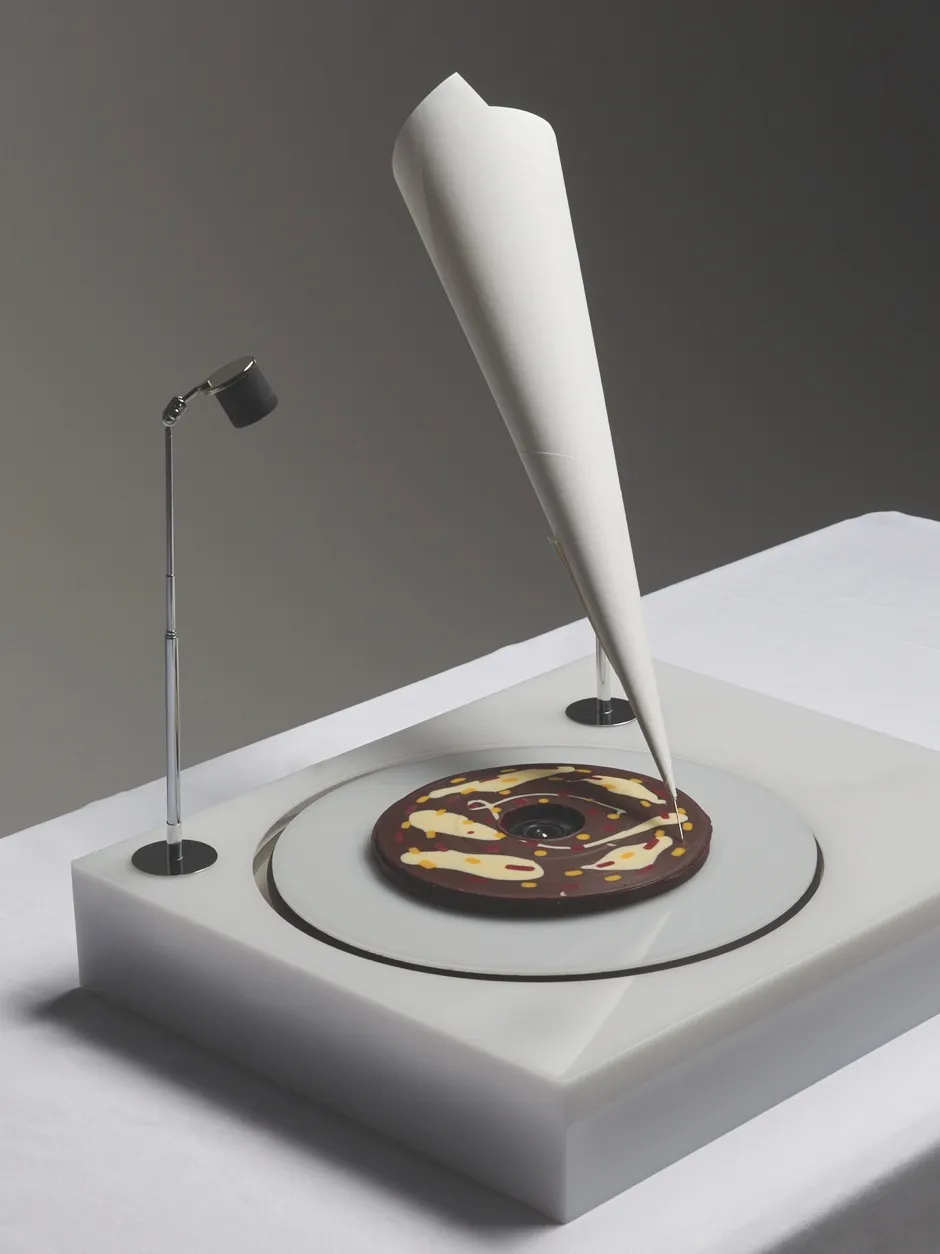Before 1928, no one had tasted bubblegum. In the late 1930s, frozen cream desserts threw off their reputation for being as hard as rock with the US invention of soft-serve ice cream (often called Mr Whippy in the UK). Popping candy introduced children’s mouths to a bizarre effervescence 20 years later. And in the late 1990s, Red Bull showcased a strange medicinal flavour that’s since become synonymous with energy drinks. The foods we eat are always evolving and new tastes are being created. By 2028, you can expect to be tucking into foods unlike anything you’ve experienced before.

In 2028 food will be tailored to your genome
Today, we know that healthy eating is important to keep our bodies in tip-top condition. This link between diet and health was first ‘proved’ in the mid-1800s by Scottish naval surgeon Dr Joseph Lind, who is credited with running one of the earliest ever clinical controlled trials. His study demonstrated that citrus fruits could protect sailors from scurvy. The watershed finding set the stage for lemons and limes to be issued as standard in sailors’ rations, and showed how healthy eating can save untold numbers of lives.
These days, science may have dissected almost every element of our diet, but many of us still feel at sea. Even when sticking to official advice, healthy foods that seem to energise one person can cause another to feel fatigued and bloated. In 2015, a team of scientists from Israel tracked blood sugar levels in the blood of 800 people over several days, making the surprising discovery that individuals’ biological response to identical foods varied wildly. Some people had a blood glucose ‘spike’ after eating sugaryice cream, while others’ glucose levelsonly increased with starchy rice – a finding at odds with conventional wisdom.
In the next 10 years, the emerging field of ‘personalised nutrition’ will offer healthy eating guidance tailored to the individual
Our bodies’ idiosyncratic handling of nutrients seems to be down to our genetics, the microbes in our gut, and variations in our organs’ internal physiology. Clinical trials like those pioneered by Lind have given us general dietary guidelines, but nutrition research tends to assume all humans are the same, and so can miss the nuances and specific needs ofthe individual.
In the next 10 years, the emerging field of ‘personalised nutrition’ will use genetic tests to fill in those gaps to offer healthy eating guidance tailored to the individual. Some companies, so-called ‘nutrigenetics services’, already test your DNA and offer dietary advice – but the advice can be hit-and-miss. By 2028, we will understand much more about our genetics. Dr Jeffrey Blumberg, a professor of nutrition science and policy at Tufts University in Massachusetts, is one of the most outspoken advocates of this new science. He insists that DNA testing will unlock personalised nutrition. “I’ll be able to tell you what kinds of fruits, what kinds of vegetables and what kinds of wholegrains you should be choosing, or exactly how often,” he says.
Sadly, personalised nutrition looks set to make cooking meals for the whole family just that little bit more taxing.
In 2028 food will be engineered to be more nutritious
‘Natural’ is a buzz term food marketers love to use, but barely any of our current produce ever existed in the natural world. The fruit and vegetables that we enjoy today have been selectively bred over thousands of years, often mutated out of all recognition from the original wild crop. Carrots weren’t originally orange, they were scrawny and white; peaches once resembled cherries and tasted salty; watermelons were small, round, hard and bitter; aubergines used to look like white eggs.
But the selective breeding for bulky and tasty traits, combined with intensive farming practices, has sometimes come at a nutritional cost. Protein, calcium, phosphorus, iron, riboflavin (vitamin B2) and vitamin C have all waned in fruit and vegetables over the past century, with today’s vegetables having about two-thirds of the minerals they used to have.
By 2028, genetics and biomolecular science should have redressed the balance, so that DNA from one organism is inserted into another, eliminating the need to undertake generations of selective breeding to acquire desirable traits.
Just last year, researchers from Australia showcased a banana with high levels of provitamin A, an important nutrient not normally present in the fruit. To create this fruit, the researchers snipped out genes from a specific type of Papua New Guinean banana that’s naturally high in provitamin A, then inserted them into the common banana variety.

More controversially, DNA can be transplanted from completely different organisms to create varieties that would never occur with selective breeding. Corn has been successfully given a boost of methionine – a key nutrient missing in the cereal – by splicing in DNA from a bacterium. Even the genetic code itself can be edited to develop ‘superpowers’: in 2008, for example, researchers created modified carrots that increase the body’s absorption of calcium.
There have been hundreds of examples of these incredible botanical creations: potatoes, corn and rice containing more protein; linseed having more omega-3 and omega-6 fats; tomatoes containing antioxidants originally found in snapdragons; and lettuce that carries iron in a form that’s easily digestible by the body.
Over the next ten years, the number of nutritionally enhanced crops will probably explode. Precise DNA-editing technology – namely a technique called CRISPR-Cas9 – now allows alteration of plant genetic code with unprecedented accuracy. Get ready for tasty apples with all the goodness of their bitter forebears, peanuts that don’t trigger allergies, and lentils that have a protein content equivalent to meat. It will be like creating the orange carrot all over again!
In 2028 food will be different from anything you have tasted before
New flavours arrive unpredictably as food manufacturers create new products. Silicon Valley – well known for attracting the brightest minds – is becoming the global hub for food innovation. A start-up currently making waves is Impossible Foods, which has created a meat-free burger that sizzles in the pan, tastes like meat and ‘bleeds’. Designed to be sustainable and environmentally friendly, the patties are made with wheat protein, coconut oil, potato protein, and flavourings. The secret ingredient is heme – the oxygen-carrying molecule that makes both meat and blood red – and seems to give meat much of its flavour. The heme that Impossible Foods uses has been extracted from plants and produced using fermentation. It’s a growth industry, with competitors such as Beyond Meat and Moving Mountains cooking up similar burgers, and plans are afoot for plant-based steaks andchicken. It doesn’t stop there, however: other start-ups are pioneering animal-free milk and egg whites. Expect to get usedto the new tastes of meat-free meat and dairy-free dairy.

It’s now been more than a decade since chef Heston Blumenthal first served his famous ‘sound of the seas’ dish, for which diners listened to a recording of breaking waves to heighten the salty flavours of seafood. It is well established that all senses inform the flavour of food: desserts taste creamier if served in a round bowl rather than on a square plate; background hissing or humming makes food taste less sweet; and crisps feel softer if we can’t hear them crunching in the mouth. The emerging field of ‘neurogastronomy’ brings together our latest understanding of neurology and food science and will be a big player in our 2028 dining.
Today, you might hear James Blunt crooning in your favourite eatery, but in the restaurant of 2028, there may be aromatic mists, subtle sound effects and controlled lighting, all optimised to make your steak and chips taste better than you thought possible. At home, augmented reality headsets that superimpose digital imagery on the real world could offer a tranquil seascape for a fish dish, or the wilds of Texas for barbecued ribs.
Unusual processed foods will make a splash in the years to come, including novelties like edible spray paint, algae protein snack bars, beer made with wastewater, and even lollipops designed to cure hiccups. We don’t know exactly what will be on tomorrow’s supermarket shelves (if supermarkets still exist, that is) due to the secretive nature of the multinational food corporations. But we do know that ice cream and chocolate that don’t melt in warm weather are definitely under development. Nanotechnology is going to feature: researchers are currently devising nanoparticles that give delayed bursts of flavour in the mouth, and earlier this year, a team of chemists created tiny magnetic particles that bind to and remove off-tasting flavour compounds in red wine while preserving its full aroma.
Cookbooks in 2028 will have some weird recipes. By analysing foods for their flavour compounds – aroma-carrying substances that convey flavour – ingredients can be paired to create novel experiences. In 2016, researchers from the International Society of Neurogastronomy demonstrated a menu with hitherto untried ingredient blends, designed to be flavourful for people who had lost their sense of taste and smell through chemotherapy.A lip-smacking highlight was: clementine upside-down cake with a dab of basil and pistachio pesto, crowned with a scoop of olive oil gelato.
Perhaps the most outlandish proposal to enhance the eating experience is to ‘hack’ the brain. The Defense Advanced Research Projects Agency (DARPA) is designing implantable ‘neural interfaces’ that aim to boost human senses by transmitting high-resolution audiovisual information, and potentially smells and tastes, directly to the brain.
In 2028 food will be guilt free
We just keep getting heavier. Today around 40 per cent of all adults are overweight or obese and every single nation on Earth is getting fatter. Obesity-related diseases, such as type 2 diabetes, are soaring on a trajectory that will cripple many health services. Most troublingly, there have been no success stories in the past 33 years – not one country has been able to halt the growth of the bulge. Processed, calorie-dense foods continue to become more widely available worldwide and, short of an international catastrophe like a global famine or mass outbreak of war, turning the tide is going to take some truly innovative thinking.
A short-term solution is to re-engineer calorific ‘junk’ food to have less fat, sugar, salt and fewer calories, while still giving the same satisfaction. There are artificial sweeteners, but they can haveunpleasant side effects and can’t be cooked as sugar can. Low-calorie sugar substitutes, such as sugar-alcohols like sorbitol, taste like the real thing but cause flatulence and diarrhoea if eaten excessively. But food technologists have managed to coat inert mineral particles with sugar, increasing the surface area that contacts the tongue, so that less sugar can be used to provide the same sweetness.
In the longer term, fine-tuning our biology could allow us to eat without guilt. Few people realise that our appetite is precisely regulated. Overeat on a Monday, and you usually eat less on Tuesday and Wednesday. Our hunger is usually set to a level almost identical to the number of calories we need. Unfortunately, the hunger ‘thermostat’ is set a little too high, by an average of about 0.4 per cent (or 11 calories a day). Left to our own devices, we will each tend to eat an extra peanut’s worth of calories each day. That doesn’t sound like much, but it adds up to nearly half a kilogramme weight gain each year. Our unfortunate tendency to develop ‘middle-aged spread’ has presumably evolved as an insurance against the next famine.
The hunt is on to nudge the appetite set point down by 11 calories or more. Many hormones swirl around the blood to tell us when to eat and when to stop. One hormone, CCK, is released by the gut when food enters it, making us feel full. Another hormone, leptin, is released by body fat and apparently tells the body when our fat stores are adequate. It’s a complex picture and attempts at manipulating individual hormone levels have been unsuccessful. Everyone is hoping that we will soon untangle the web of brain-hormone messages and managed to devise supplements, foods or medicine that can make a tiny tweak to the dial.
In 2028 food will be more creative
Kitchen creativity has few limits. From Weetabix ice cream to liquid nitrogen cocktail balls, exciting dishes are made by chefs who love to surprise, but few such culinary masterpieces make it into the home, owing to a reliance on specialist equipment and professional skills. Expect that to change as equipment becomes more affordable. Even today, the sous-vide water bath that was once reserved for fine dining restaurants can be purchased for less than a set of pans. In the coming years, the spiraliser will have been eclipsed by a handheld spherificator or foam-making espuma gun. For the ambitious home cook, getting creative is going to be a lot more fun.

When skills are lacking, a robotic sous-chef may lend a helping hand. Imagine being able to send a message your Robo-Chef while on the commute home to prepare a recipe of your choice. Within moments, android arms will be gathering ingredients from the fridge, julienning the turnips and deboning the chicken.
It’s not completely pie-in-the-sky, either. UK-based Moley Robotics has already developed a ‘robotic kitchen’, set for consumer release this year. Consisting of two articulated arms, cooking hobs, oven and touchscreen interface, this is a robot that can chop, whisk, stir, pour and clean. It’s no clumsy Dalek either: each hand has 20 motors, 24 joints and 129 sensors to mimic the movements of human hands. Skills are ‘learnt’ by replicating the movements of chefs and other cooks, and their recipes can be selected via an iTunes-like recipe catalogue. The speed and dexterity of the robotic kitchen will have foodies salivating at the possibilities. But with the first devices expected to cost around £10,000 each, it might be worth holding out until they throw in a dishwasher.
Elsewhere, 3D-printed food offers endless opportunities for creating intricate dishes that are impossible to create by human hands alone. Everything from toys to aeroplane parts, from prosthetics to clothing – even whole houses – are already being made with 3D printers. And the food frontier has been crossed. Custom sweets can be designed and made using sugar-rich ‘ink’ to construct anything from interlocking candy cubes and chewable animal shapes, to lollipops in the shape of Queen Elizabeth’s head.

Until recently, 3D printing has been sugar-based, but technology is emerging that reliably prints savoury and fresh ingredients. Natural Machines has developed one such kitchen appliance that can be loaded with multiple ingredient capsules to create and cook all manner of weird and wonderful foods. These include: crackers shaped like coral, hexagonal crisps, heart-shaped pizzas and hollow croutons that dissolve in sauce. With the promise of cutting waste by repurposing ‘ugly’ food and offcuts for food capsules, Natural Machines has the potential to drastically reduce packaging and transport costs. Not yet sold on the idea? Imagine wowing your nearest and dearest by serving upthe ultimate romantic meal finished off with a personalised chocolate torte, where an invisible series of grooves in the chocolate surface plays their favourite song when placed in a special ‘record player’. Delicious!
This is an extract from issue 322 of BBC Focus magazine.
Subscribe and get the full article delivered to your door, or download the BBC Focus app to read it on your smartphone or tablet. Find out more
Follow Science Focus onTwitter,Facebook, Instagramand Flipboard
